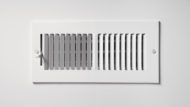Ensuring the functionality and efficiency of an HVAC system is a priority for both homeowners and commercial property managers, given its central role in maintaining indoor comfort. Recognizing and addressing common HVAC issues is vital for the longevity and performance of these systems. From clogged filters that can impede airflow and efficiency, to malfunctioning thermostats that disrupt the regulation of temperature, the array of potential problems can be daunting. Timely intervention, whether through DIY fixes like filter changes or professional repairs for more complex issues, can prevent these seemingly minor problems from escalating and affecting the overall system performance.
Choosing between repairs or considering a complete system replacement presents a significant dilemma. Aging systems may no longer provide the same efficiency or air quality level as newer models, pushing many toward the decision to upgrade. This introduction to common HVAC problems and the ensuing discussion on maintenance routines versus the benefits of system replacement aims to guide property owners in making informed decisions. By examining the challenges, costs, and advantages of maintaining or replacing HVAC systems, this blog post seeks to navigate the complexities of ensuring optimal indoor air comfort and efficiency.
Diagnosing Common HVAC Problems

Leaks in the refrigerant line and electrical issues within the system represent other prevalent technical difficulties necessitating skilled intervention. Fortunately, these problems are generally resolvable with precise, targeted repairs. The effectiveness of addressing these issues often hinges on regular maintenance and thorough inspections. By implementing these preventive measures, technicians can identify and rectify potential problems early, preventing them from escalating into significant malfunctions that disrupt system operations.
Furthermore, adhering to a regimen of routine maintenance and periodic checks serves the dual purpose of extending the equipment’s lifespan and ensuring its efficiency remains optimal. The U.S. Environmental Protection Agency (EPA) underscores the importance of regular HVAC maintenance, noting that it can avert common problems before they necessitate costly repairs or replacements. By maintaining vigilance regarding system upkeep and promptly addressing issues as they arise, homeowners and commercial property managers can safeguard against performance degradation and ensure their HVAC systems continue to provide reliable, efficient service.
The Importance of Routine Maintenance
Routine maintenance is critical to the longevity and efficiency of any HVAC system. This proactive approach involves regular checks and minor repairs that significantly extend the lifespan of the unit while ensuring it performs optimally. Not only does this regular upkeep prevent the system from deteriorating prematurely, but it also guarantees consistent comfort for occupants, irrespective of the season. Moreover, the assurance that comes from knowing your system is in top-notch condition is invaluable, significantly minimizing the risk of unexpected breakdowns that can disrupt comfort and result in costly emergency repairs.
In regions like Los Angeles, where residents face a wide range of temperatures throughout the year, having a reliable HVAC system is non-negotiable. Routine maintenance becomes crucial in this context, ensuring that heating and cooling solutions work efficiently and effectively when needed. Addressing issues like filter replacements, thermostat calibrations, and duct inspections before they escalate can keep the system running smoothly and prevent more significant, more expensive problems from developing. This level of diligence ensures that the system’s reliability and efficiency are maintained, saving property owners from the inconvenience and cost of significant repairs or premature replacement.

When Replacement Becomes the Preferable Option
Sometimes, despite ongoing repairs and maintenance, an HVAC system reaches a point where it no longer operates efficiently. At this juncture, opting for a replacement emerges as the more logical and cost-effective decision. Recognizing the right moment to transition from repairs to replacement is crucial for maintaining an optimal indoor environment.
System Age
As HVAC units age beyond the 15-year mark, their efficiency declines significantly compared to the performance of newer, more advanced models. This decrease in efficiency is not just about operational capabilities but also impacts the cost of heating and cooling, making older systems more expensive to run. The National Association of Home Builders corroborates this by setting the average lifespan of a diligently maintained HVAC system at about 10 to 15 years. Beyond this period, the likelihood of frequent malfunctions increases, leading to more regular and potentially costly repair jobs.
Technological advancements in the HVAC industry mean that modern systems offer improvements not just in efficiency, but also in features such as programmability, air quality, and compatibility with smart home systems. When an HVAC system nears or surpasses the 15-year mark, its obsolescence becomes evident not just in its operational deficiencies but in its inability to provide the same level of comfort and convenience as current models. This discrepancy underlines the need for replacement, as newer systems allow homeowners and commercial property managers to achieve more significant energy savings, improved air quality, and enhanced control over their indoor environments.
Supplementing Energy Bills
When utility bills climb without a clear reason, it often points to a loss of efficiency in your HVAC system. Older or malfunctioning systems must work harder to heat or cool your space, leading to increased energy use and higher costs. Upgrading to a newer model can provide substantial savings on these monthly expenses. Modern HVAC systems are designed with efficiency in mind, utilizing the latest technology to minimize energy consumption while maintaining optimal comfort levels.
Choosing to upgrade your HVAC unit is not just about reducing bills; it’s also about embracing newer, more efficient heating and cooling technologies. These advancements allow for more precise control over your indoor environment, aligning operational costs with actual usage. This means not only will your space maintain consistent temperatures with less effort, but you’ll also see a noticeable decrease in your monthly energy expenses, making the investment in a new system both economically and environmentally beneficial.
Costly HVAC Repairs
When the expense of repeated repairs to an HVAC system begins to escalate, it might signal that shifting towards a new installation is a financially more brilliant move. Recurring malfunctions serve as a red flag that the system is no longer at its peak performance, draining more resources than it should. This cycle of breakdowns not only impacts your wallet but also affects the consistent comfort of your environment, indicating the need for a lasting solution.
Opting for a new HVAC unit, while an upfront investment, often becomes more cost-effective over time. A new, efficient unit significantly reduces the chance of continuous breakdowns and the associated repair costs. The U.S. Department of Energy highlights that modern HVAC systems can be up to 50% more efficient than models over 10 years old, offering substantial savings on utility bills. Adopting a new system alleviates the financial strain of repairs and ensures reliable heating and cooling, contributing to an undisturbed, comfortable setting.
Advantages of Upgrading Your HVAC Unit
Transitioning to a modern HVAC system can revolutionize the comfort and efficiency of an indoor environment. Such an upgrade is almost indispensable in regions like Los Angeles, with its diverse climate. The newest HVAC models stand out for their superior energy efficiency and introduce a suite of innovative features designed to optimize heating and cooling. These advancements, including programmable thermostats and zoning capabilities, empower users to customize their environments while conserving energy.
These updated systems substantially improve indoor air quality. Advanced filtration capabilities tackle a broad spectrum of air pollutants, from everyday dust and pollen to more dangerous contaminants. This feature is especially vital in urban settings where external air quality may pose health risks, ensuring a safer, cleaner indoor air environment. Upgrading thus serves a dual purpose: it enhances temperature control while also safeguarding the health and comfort of occupants, making it an investment in both efficiency and well-being.
Moreover, installing a contemporary HVAC unit is an investment that goes beyond short-term gains in comfort and energy savings. It’s a proactive measure that significantly reduces long-term operational costs. Enhanced efficiency translates to lower utility expenses, and the durability of newer models means fewer repair needs, offering both immediate benefits and enduring value. As utility rates continue to rise, the savings potential of these advanced systems becomes even more apparent, promising a return on investment through reduced energy expenditures and maintenance costs.
Embracing the Future with Modern HVAC Solutions
The step towards modern HVAC solutions is a leap into a future where technology and convenience converge. These advanced systems are designed with user experience at the forefront, integrating smart technologies that allow for effortless climate control. The ability to adjust settings from afar caters to the modern lifestyle, ensuring optimal comfort without wastefulness. Beyond convenience, these systems are committed to a greener future, employing environmentally friendly refrigerants and operating with greater energy efficiency.
This transition marks a significant departure from traditional HVAC systems, merging ease of use with environmental responsibility. The emphasis on predictive maintenance and intelligent diagnostics further enhances efficiency, reducing the likelihood of unexpected breakdowns and prolonging the system’s lifespan. As a result, property owners can look forward to a reduction in operational costs and a notable decrease in their ecological footprint, aligning with broader sustainability goals.
Adopting these innovative HVAC solutions reflects a broader trend toward smart home and building technologies, positioning properties at the leading edge of comfort and sustainability. This enhances the living and working environments and underscores dedication to adopting practices that prioritize human and environmental health. In this way, modern HVAC systems are not merely an upgrade but a testament to forward-thinking property management and a commitment to future generations.
A Strategic HVAC Upgrade for Enhanced Market Appeal
Upgrading to the latest HVAC technologies can significantly amplify a property’s attractiveness and competitive edge. In fluctuating climates, the value of a reliable and efficient heating and cooling system cannot be overstated. This appeals to eco-conscious consumers as well as those prioritizing comfort and utility savings. These modern systems enhance a property’s appeal, positioning it as a prime choice in a sustainability-focused real estate market.
The advantages of such an upgrade extend to a tangible increase in property value. Modern HVAC systems are a key feature for many potential homeowners and commercial investors, elevating a property’s status in the real estate market. This strategic enhancement is more than an aesthetic or comfort upgrade—it’s a long-term investment in the property’s desirability and marketability, making it a wise choice for property owners aiming for top dollar in sales or rentals.
By implementing smart HVAC technologies, properties not only meet current standards for comfort and efficiency but also anticipate future trends in real estate. This foresighted approach ensures properties remain relevant and appealing, attracting a wider pool of potential buyers or renters. It’s a concept that transcends mere temperature control, integrating aspects of innovation, environmental stewardship, and market savvy into one transformative upgrade.
Navigating HVAC Upgrades
Understanding when to repair or replace your HVAC system is key to maintaining an efficient and comfortable indoor environment. Regular maintenance can extend your system’s life, but there comes a point where upgrading is the most sensible option. A new system offers increased efficiency, better air quality, and long-term savings, making it a wise investment for both homeowners and commercial property managers seeking to optimize their property’s comfort and value.







